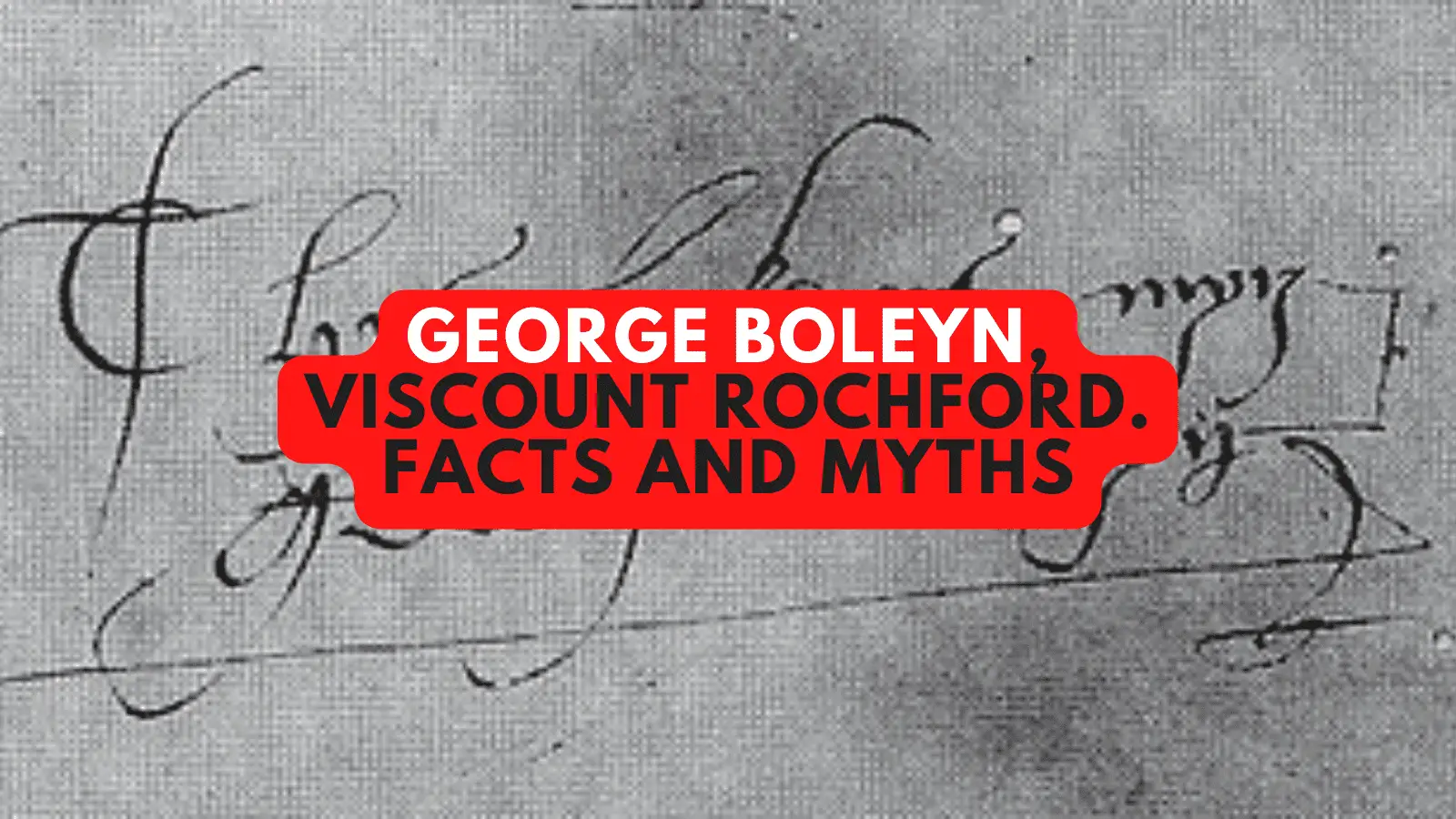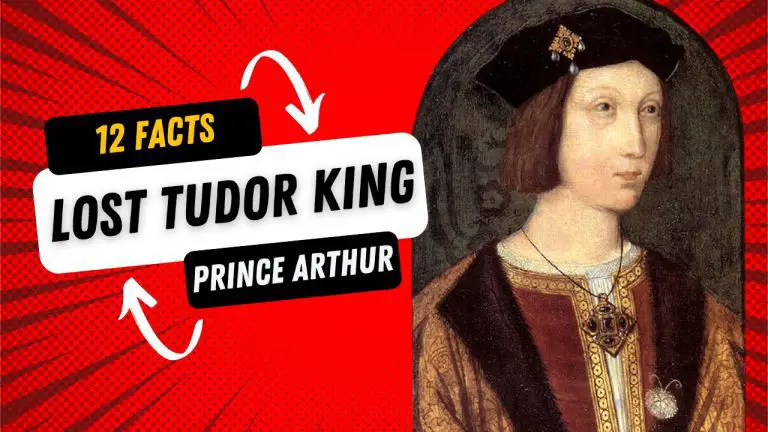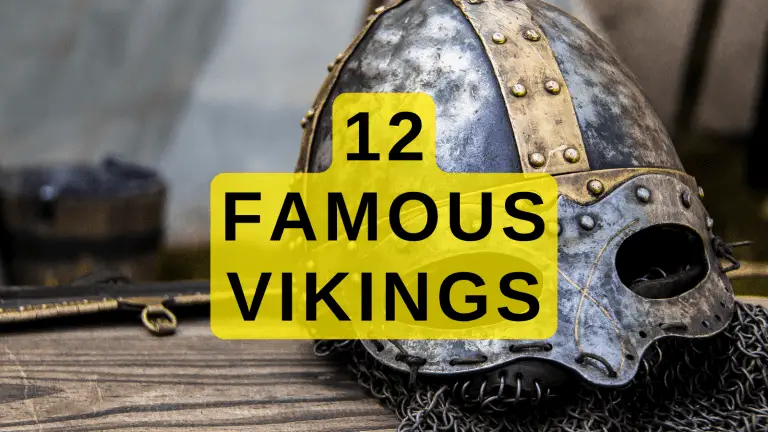George Boleyn, Viscount Rochford: Facts and Myths
George Boleyn, Viscount Rochford, the English courtier and nobleman, is probably best remembered as the brother to Anne Boleyn. As the brother to the second wife of King Henry VIII, he was also the maternal uncle to Queen Elizabeth I. But George also took the stage in the playing out of the politics of the early 1530s.
[/et_pb_text][/et_pb_column][/et_pb_row][et_pb_row _builder_version=”4.15.0″ _module_preset=”default” global_colors_info=”{}”][et_pb_column type=”4_4″ _builder_version=”4.15.0″ _module_preset=”default” global_colors_info=”{}”][et_pb_text _builder_version=”4.15.0″ _module_preset=”default” global_colors_info=”{}”]A Man of Unknown Age
[/et_pb_text][/et_pb_column][/et_pb_row][et_pb_row _builder_version=”4.15.0″ _module_preset=”default” global_colors_info=”{}”][et_pb_column type=”4_4″ _builder_version=”4.15.0″ _module_preset=”default” global_colors_info=”{}”][et_pb_text _builder_version=”4.15.0″ _module_preset=”default” global_colors_info=”{}”]George Boleyn’s exact date of birth is a mystery. He was the third child of Thomas Boleyn and Elizabeth Howard, born at Blickling Hall in Norfolk in April 1504. They were also blessed with two daughters, Mary around 1500 and Anne a year later.
George was always going to follow in his father’s footsteps as a courtier, politician, and diplomat. The route to protecting greatness and achieving social position, patronage, and potential wealth was through the monarchy was and service to the Royal Family. It was due to this that young George attended the Christmas festivities when he was just ten which was his introduction to Henry VIII’s court. He made the grade, apparently, and was selected as one of the King’s pageboys not long afterwards.
[/et_pb_text][/et_pb_column][/et_pb_row][et_pb_row _builder_version=”4.15.0″ _module_preset=”default” global_colors_info=”{}”][et_pb_column type=”4_4″ _builder_version=”4.15.0″ _module_preset=”default” global_colors_info=”{}”][et_pb_text _builder_version=”4.15.0″ _module_preset=”default” global_colors_info=”{}”]He spoke perfect French
[/et_pb_text][/et_pb_column][/et_pb_row][et_pb_row _builder_version=”4.15.0″ _module_preset=”default” global_colors_info=”{}”][et_pb_column type=”4_4″ _builder_version=”4.15.0″ _module_preset=”default” global_colors_info=”{}”][et_pb_text _builder_version=”4.15.0″ _module_preset=”default” global_colors_info=”{}”]To meet the expectations of a career as a diplomat, George’s superior education had him speaking fluent French, and a little Italian and Latin. Learning was also highly praised at Court. He excelled at mastering French which may be thanks to spending time in France as a child when his father was posted at the embassy there from January 1519. This supposition however belies the belief that he spent all of his early years in England. Be that as it may, George and Anne enjoyed their time together during their formative years.
[/et_pb_text][/et_pb_column][/et_pb_row][et_pb_row _builder_version=”4.15.0″ _module_preset=”default” global_colors_info=”{}”][et_pb_column type=”4_4″ _builder_version=”4.15.0″ _module_preset=”default” global_colors_info=”{}”][et_pb_text _builder_version=”4.15.0″ _module_preset=”default” global_colors_info=”{}”]He married Jane Parker around 1524
[/et_pb_text][/et_pb_column][/et_pb_row][et_pb_row _builder_version=”4.15.0″ _module_preset=”default” global_colors_info=”{}”][et_pb_column type=”4_4″ _builder_version=”4.15.0″ _module_preset=”default” global_colors_info=”{}”][et_pb_text _builder_version=”4.15.0″ _module_preset=”default” global_colors_info=”{}”]George and Jane Parker were married at some point by January 1526, confirmed by Wolsey’s note of an additional £20 a year awarded to “young Boleyn for him and his wife to live on”. All evidence points to the marriage being childless. In fact, when Jane wrote to Cromwell after George’s death, no mention of a child under her care is mentioned. What is known for sure is that the marriage remains shrouded in mystery. Some note the union as unhappy, and George’s sexuality has also been questioned with suggestions that he was homosexual. British historian Alison Weir has this to say about it: “[A] talented young man … he was very good-looking and very promiscuous. In fact, according to George Cavendish, he lived in ‘bestial’ fashion, forcing widows, deflowering virgins … [and] it has been suggested he indulged in homosexual activity too, but there is no evidence for this, although he may well have committed buggery with female partners.” Then again, opposing arguments are that while the exact nature of the marriage is vague, it was nonetheless a happy one.
[/et_pb_text][/et_pb_column][/et_pb_row][et_pb_row _builder_version=”4.15.0″ _module_preset=”default” global_colors_info=”{}”][et_pb_column type=”4_4″ _builder_version=”4.15.0″ _module_preset=”default” global_colors_info=”{}”][et_pb_text _builder_version=”4.15.0″ _module_preset=”default” global_colors_info=”{}”]George’s Reputation as a Womaniser
[/et_pb_text][/et_pb_column][/et_pb_row][et_pb_row _builder_version=”4.15.0″ _module_preset=”default” global_colors_info=”{}”][et_pb_column type=”4_4″ _builder_version=”4.15.0″ _module_preset=”default” global_colors_info=”{}”][et_pb_text _builder_version=”4.15.0″ _module_preset=”default” global_colors_info=”{}”]Regardless of the nature of the marriage and speculation as to George’s sexual preferences, he appears to have been a womaniser. This was quite normal among the contemporaries of his time. He wore the Boleyn arrogance and pride and was unwavering in his support of the King, his sister, and his niece over Catherine and her daughter.
[/et_pb_text][/et_pb_column][/et_pb_row][et_pb_row _builder_version=”4.15.0″ _module_preset=”default” global_colors_info=”{}”][et_pb_column type=”4_4″ _builder_version=”4.15.0″ _module_preset=”default” global_colors_info=”{}”][et_pb_text _builder_version=”4.15.0″ _module_preset=”default” global_colors_info=”{}”]He Was A Gentleman Of The Privy Chamber
[/et_pb_text][/et_pb_column][/et_pb_row][et_pb_row _builder_version=”4.15.0″ _module_preset=”default” global_colors_info=”{}”][et_pb_column type=”4_4″ _builder_version=”4.15.0″ _module_preset=”default” global_colors_info=”{}”][et_pb_text _builder_version=”4.15.0″ _module_preset=”default” global_colors_info=”{}”]George became a Gentleman of the Privy Chamber in 1525. The fact that this came about after the affair between King Henry VIII and Mary Boleyn had ended lends credence to George having the King’s favour regardless of Henry’s penchant for the Boleyn women. As a new courtier in the court, George Boleyn’s role was largely light-hearted, playing bowls, tennis, and card games with the king, and joining him in archery and gambling.
By 1527, Henry was in love with Anne Boleyn and wanted nothing more than for her to produce a legitimate son and heir for him, which would solve his succession crisis. George’s rise in power was hitched to that of his sister at this time. In 1529, George was knighted and then made Lord Rochford, receiving property and grants from then on, until his demise.
When Cardinal Wolsey saw to it that George lost this position six months after his knighthood by halving the number of gentlemen in the Privy Chamber, George was appointed Royal Cupbearer. He was further compensated, as mentioned earlier, with the additional £20 a year with which to support himself and his wife.
[/et_pb_text][/et_pb_column][/et_pb_row][et_pb_row _builder_version=”4.15.0″ _module_preset=”default” global_colors_info=”{}”][et_pb_column type=”4_4″ _builder_version=”4.15.0″ _module_preset=”default” global_colors_info=”{}”][et_pb_text _builder_version=”4.15.0″ _module_preset=”default” global_colors_info=”{}”]He Survived the Sweating Sickness
[/et_pb_text][/et_pb_column][/et_pb_row][et_pb_row _builder_version=”4.15.0″ _module_preset=”default” column_structure=”1_5,3_5,1_5″][et_pb_column _builder_version=”4.15.0″ _module_preset=”default” type=”1_5″][/et_pb_column][et_pb_column _builder_version=”4.15.0″ _module_preset=”default” type=”3_5″][et_pb_image src=”http://historywithhenry.com/wp-content/uploads/2022/03/1-10.png” _builder_version=”4.15.0″ _module_preset=”default” alt=”George Boleyn Viscount Rochford” title_text=”1″ hover_enabled=”0″ sticky_enabled=”0″][/et_pb_image][/et_pb_column][et_pb_column _builder_version=”4.15.0″ _module_preset=”default” type=”1_5″][/et_pb_column][/et_pb_row][et_pb_row _builder_version=”4.15.0″ _module_preset=”default” global_colors_info=”{}”][et_pb_column type=”4_4″ _builder_version=”4.15.0″ _module_preset=”default” global_colors_info=”{}”][et_pb_text _builder_version=”4.15.0″ _module_preset=”default” global_colors_info=”{}”]While at Waltham Abbey with Henry and Catherine in June 1528, George contracted the sweating sickness. Anne also came down with the disease while at Hever Castle, and it was Henry who informed her of her brother’s illness and recovery.
[/et_pb_text][/et_pb_column][/et_pb_row][et_pb_row _builder_version=”4.15.0″ _module_preset=”default” global_colors_info=”{}”][et_pb_column type=”4_4″ _builder_version=”4.15.0″ _module_preset=”default” global_colors_info=”{}”][et_pb_text _builder_version=”4.15.0″ _module_preset=”default” global_colors_info=”{}”]He Rose in Power Alongside Anne Boleyn
[/et_pb_text][/et_pb_column][/et_pb_row][et_pb_row _builder_version=”4.15.0″ _module_preset=”default” global_colors_info=”{}”][et_pb_column type=”4_4″ _builder_version=”4.15.0″ _module_preset=”default” global_colors_info=”{}”][et_pb_text _builder_version=”4.15.0″ _module_preset=”default” global_colors_info=”{}”]After being knighted and resuming his position as a member of the Privy Chamber, George’s diplomatic career took off in late 1529. That December, he was ennobled as George, Viscount Rochford, and left for France as a diplomat. He was only 25 which suggests Anne might have used her influence in getting him this post.
The first appointment was between late October 1529 and late February 1530. George and John Stokesley, the Dean of the Chapel Royal, were assigned to encourage the universities of France to support the divorce of Henry VIII and Catherine of Aragon. King Francis, under encouragement from George, penned a strong letter in favour of the divorce which reversed the universities’ initial negative response.
The second embassy was in March 1533 and saw George telling the King of France about his sister’s marriage to the King of England. George was commissioned also to garner Francis’ increased support of Henry. George was successful in getting Francis to write to the Pope asking him to concede to Henry’s wishes.
George’s third appointment was between May and August of 1533 and saw him and his uncle the Duke of Norfolk travel to France to attend the meeting of the King of France and Pope Clement VII. It was at this time that they learned of the Pope excommunicating Henry. George returned to England to let Henry know about the Pope’s actions.
George’s fourth embassy was in April 1534 and saw him having to encourage the French King to further support Henry’s cause and to pass similar legislation as had been passed in England against the Pope, as well as to organise a meeting between Anne and the two Kings.
In July 1534, George was again at the French court to organise for the kings to meet following Anne’s pregnancy, which subsequently ended in a miscarriage.
George’s final appointment in May 1535 saw him and his uncle negotiate a marriage contract between the King of France’s third son and the baby Princess Elizabeth, George’s niece, under the instruction of Henry.
[/et_pb_text][/et_pb_column][/et_pb_row][et_pb_row _builder_version=”4.15.0″ _module_preset=”default” global_colors_info=”{}”][et_pb_column type=”4_4″ _builder_version=”4.15.0″ _module_preset=”default” global_colors_info=”{}”][et_pb_text _builder_version=”4.15.0″ _module_preset=”default” global_colors_info=”{}”]He Had A Good Relationship With The King Of France
[/et_pb_text][/et_pb_column][/et_pb_row][et_pb_row _builder_version=”4.15.0″ _module_preset=”default” global_colors_info=”{}”][et_pb_column type=”4_4″ _builder_version=”4.15.0″ _module_preset=”default” global_colors_info=”{}”][et_pb_text _builder_version=”4.15.0″ _module_preset=”default” global_colors_info=”{}”]George and the King of France, King Francis, had a good relationship. It was George who encouraged King Francis to write a strong letter in favour of King Henry VIII’s divorce that resulted in turning the universities’ negative decision. In March 1533 George informed King Francis of Anne and Henry’s marriage. George encouraged Francis to support Henry more vehemently and had him pen the letter to the Pope asking him to concede to Henry’s wishes.
[/et_pb_text][/et_pb_column][/et_pb_row][et_pb_row _builder_version=”4.15.0″ _module_preset=”default” global_colors_info=”{}”][et_pb_column type=”4_4″ _builder_version=”4.15.0″ _module_preset=”default” global_colors_info=”{}”][et_pb_text _builder_version=”4.15.0″ _module_preset=”default” global_colors_info=”{}”]He Used His Father’s Junior Title Of Viscount Rochford
[/et_pb_text][/et_pb_column][/et_pb_row][et_pb_row _builder_version=”4.15.0″ _module_preset=”default” global_colors_info=”{}”][et_pb_column type=”4_4″ _builder_version=”4.15.0″ _module_preset=”default” global_colors_info=”{}”][et_pb_text _builder_version=”4.15.0″ _module_preset=”default” global_colors_info=”{}”]In 1529, George adopted his father’s junior title Viscount Rochford as a courtesy title after his father was promoted in the peerage to Earl of Wiltshire and Earl of Ormond.
[/et_pb_text][/et_pb_column][/et_pb_row][et_pb_row _builder_version=”4.15.0″ _module_preset=”default” global_colors_info=”{}”][et_pb_column type=”4_4″ _builder_version=”4.15.0″ _module_preset=”default” global_colors_info=”{}”][et_pb_text _builder_version=”4.15.0″ _module_preset=”default” global_colors_info=”{}”]He Carried the Canopy Over Elizabeth At Her Christening
[/et_pb_text][/et_pb_column][/et_pb_row][et_pb_row _builder_version=”4.15.0″ _module_preset=”default” global_colors_info=”{}”][et_pb_column type=”4_4″ _builder_version=”4.15.0″ _module_preset=”default” global_colors_info=”{}”][et_pb_text _builder_version=”4.15.0″ _module_preset=”default” global_colors_info=”{}”]Princess Elizabeth who was to become Queen Elizabeth I was George’s niece. On 10 September 1533, George carried the canopy over his royal niece at her christening. He was joined in this honour by his uncles, Lord Thomas Howard and William Howard, 1st Baron Howard of Effingham, and John Hussey, 1st Baron Hussey of Sleaford.
[/et_pb_text][/et_pb_column][/et_pb_row][et_pb_row _builder_version=”4.15.0″ _module_preset=”default” global_colors_info=”{}”][et_pb_column type=”4_4″ _builder_version=”4.15.0″ _module_preset=”default” global_colors_info=”{}”][et_pb_text _builder_version=”4.15.0″ _module_preset=”default” global_colors_info=”{}”]He Had a Higher Attendance Rate at Parliament Than Any Other Lord
[/et_pb_text][/et_pb_column][/et_pb_row][et_pb_row _builder_version=”4.15.0″ _module_preset=”default” global_colors_info=”{}”][et_pb_column type=”4_4″ _builder_version=”4.15.0″ _module_preset=”default” global_colors_info=”{}”][et_pb_text _builder_version=”4.15.0″ _module_preset=”default” global_colors_info=”{}”]After George was formally called to Parliament on 5 February 1533, his attendance rate was higher than any other Lord. This achievement was all the more impressive given his other onerous duties, and clearly proved his commitment
[/et_pb_text][/et_pb_column][/et_pb_row][et_pb_row _builder_version=”4.15.0″ _module_preset=”default” global_colors_info=”{}”][et_pb_column type=”4_4″ _builder_version=”4.15.0″ _module_preset=”default” global_colors_info=”{}”][et_pb_text _builder_version=”4.15.0″ _module_preset=”default” global_colors_info=”{}”]He Was Arrested on Suspicion of Incest with the Queen
[/et_pb_text][/et_pb_column][/et_pb_row][et_pb_row _builder_version=”4.15.0″ _module_preset=”default” global_colors_info=”{}”][et_pb_column type=”4_4″ _builder_version=”4.15.0″ _module_preset=”default” global_colors_info=”{}”][et_pb_text _builder_version=”4.15.0″ _module_preset=”default” global_colors_info=”{}”]When Anne Boleyn miscarried the son and heir, Henry became so infatuated with her maid-of-honour, Jane Seymour, that he absolutely had to be rid of his wife to be with her. Henry and his chief advisor, Thomas Cromwell, plotted to accuse Anne of adultery with five men, of whom George was one. As such, George was charged with incest with his sister and for plotting to kill the King. Brother and sister were arrested on the day after the May Day joust, 2 May 1536. They were found guilty on Monday 15 May, with Anne tried just hours before her brother, leading to him being pre-judged, prejudiced by her being found guilty. All five of those accused of adultery with the queen were beheaded on Tower Hill on the morning of Wednesday, 17th May 1536 – George Boleyn, Henry Norris, Francis Weston, William Brereton, and Mark Smeaton.
[/et_pb_text][/et_pb_column][/et_pb_row][et_pb_row _builder_version=”4.15.0″ _module_preset=”default” global_colors_info=”{}”][et_pb_column type=”4_4″ _builder_version=”4.15.0″ _module_preset=”default” global_colors_info=”{}”][et_pb_text _builder_version=”4.15.0″ _module_preset=”default” global_colors_info=”{}”]He Gave a Long Speech On the Scaffold
[/et_pb_text][/et_pb_column][/et_pb_row][et_pb_row _builder_version=”4.15.0″ _module_preset=”default” global_colors_info=”{}”][et_pb_column type=”4_4″ _builder_version=”4.15.0″ _module_preset=”default” global_colors_info=”{}”][et_pb_text _builder_version=”4.15.0″ _module_preset=”default” global_colors_info=”{}”]George’s extremely long scaffold speech was a true example of his linguistic skills and oration. All indications are that he held the vast crowd’s silent attention. He defended his religious beliefs and his passion for reform and admitted to being a sinner deserving of death rather than dishonouring himself by pleading innocence after being handed a guilty verdict. He begged forgiveness from the offended and God. The closest he was to denying his guilt was through blaming fortune for his and saying that he was dying not because he was guilty but because luck had been against him. He then lost his head to the axeman. Anne was beheaded two days later.
[/et_pb_text][/et_pb_column][/et_pb_row][et_pb_row _builder_version=”4.15.0″ _module_preset=”default” global_colors_info=”{}”][et_pb_column type=”4_4″ _builder_version=”4.15.0″ _module_preset=”default” global_colors_info=”{}”][et_pb_text _builder_version=”4.15.0″ _module_preset=”default” global_colors_info=”{}”]He Is Buried in St Peter Ad Vincula, Tower of London
[/et_pb_text][/et_pb_column][/et_pb_row][et_pb_row _builder_version=”4.15.0″ _module_preset=”default” column_structure=”1_5,3_5,1_5″][et_pb_column _builder_version=”4.15.0″ _module_preset=”default” type=”1_5″][/et_pb_column][et_pb_column _builder_version=”4.15.0″ _module_preset=”default” type=”3_5″][et_pb_image src=”http://historywithhenry.com/wp-content/uploads/2022/03/2-10.png” _builder_version=”4.15.0″ _module_preset=”default” alt=”George Boleyn Viscount Rochford” title_text=”2″ hover_enabled=”0″ sticky_enabled=”0″][/et_pb_image][/et_pb_column][et_pb_column _builder_version=”4.15.0″ _module_preset=”default” type=”1_5″][/et_pb_column][/et_pb_row][et_pb_row _builder_version=”4.15.0″ _module_preset=”default” global_colors_info=”{}”][et_pb_column type=”4_4″ _builder_version=”4.15.0″ _module_preset=”default” global_colors_info=”{}”][et_pb_text _builder_version=”4.15.0″ _module_preset=”default” global_colors_info=”{}”]St Peter ad Vincula is under the direct jurisdiction of the monarch, not the bishop of the diocese and is the burial place of many of the most famous prisoners executed at the Tower of London.
[/et_pb_text][/et_pb_column][/et_pb_row][et_pb_row _builder_version=”4.15.0″ _module_preset=”default” global_colors_info=”{}”][et_pb_column type=”4_4″ _builder_version=”4.15.0″ _module_preset=”default” global_colors_info=”{}”][et_pb_text _builder_version=”4.15.0″ _module_preset=”default” global_colors_info=”{}”]Myths About George
[/et_pb_text][/et_pb_column][/et_pb_row][et_pb_row _builder_version=”4.15.0″ _module_preset=”default” global_colors_info=”{}”][et_pb_column type=”4_4″ _builder_version=”4.15.0″ _module_preset=”default” global_colors_info=”{}”][et_pb_text _builder_version=”4.15.0″ _module_preset=”default” global_colors_info=”{}”]He attended Oxford University
[/et_pb_text][/et_pb_column][/et_pb_row][et_pb_row _builder_version=”4.15.0″ _module_preset=”default” column_structure=”1_5,3_5,1_5″][et_pb_column _builder_version=”4.15.0″ _module_preset=”default” type=”1_5″][/et_pb_column][et_pb_column _builder_version=”4.15.0″ _module_preset=”default” type=”3_5″][et_pb_image src=”http://historywithhenry.com/wp-content/uploads/2022/03/3-10.png” _builder_version=”4.15.0″ _module_preset=”default” alt=”George Boleyn Viscount Rochford” title_text=”3″ hover_enabled=”0″ sticky_enabled=”0″][/et_pb_image][/et_pb_column][et_pb_column _builder_version=”4.15.0″ _module_preset=”default” type=”1_5″][/et_pb_column][/et_pb_row][et_pb_row _builder_version=”4.15.0″ _module_preset=”default” global_colors_info=”{}”][et_pb_column type=”4_4″ _builder_version=”4.15.0″ _module_preset=”default” global_colors_info=”{}”][et_pb_text _builder_version=”4.15.0″ _module_preset=”default” global_colors_info=”{}”]University of Oxford records do not indicate that George attended the university when he was not in attendance at Court, although the tradition holds this to be true. However, it frequently happened before the English Civil War that aristocrats who attended the university either technically matriculated or graduated.
[/et_pb_text][/et_pb_column][/et_pb_row][et_pb_row _builder_version=”4.15.0″ _module_preset=”default” global_colors_info=”{}”][et_pb_column type=”4_4″ _builder_version=”4.15.0″ _module_preset=”default” global_colors_info=”{}”][et_pb_text _builder_version=”4.15.0″ _module_preset=”default” global_colors_info=”{}”]He Was Gay
[/et_pb_text][/et_pb_column][/et_pb_row][et_pb_row _builder_version=”4.15.0″ _module_preset=”default” global_colors_info=”{}”][et_pb_column type=”4_4″ _builder_version=”4.15.0″ _module_preset=”default” global_colors_info=”{}”][et_pb_text _builder_version=”4.15.0″ _module_preset=”default” global_colors_info=”{}”]No evidence exists to back up the invention of fiction writers that George was either bisexual or gay. Henry introduced legislation during Anne Boleyn’s lifetime making buggery an offence punishable by death. Homosexuality was therefore strongly condemned even within the gay circles of the time. Contemporary history enthusiasts are therefore want to give flight to the imagination where this is concerned, given the secrecy necessitated by law, that interesting characters now long-dead were gay, bisexual, or perhaps bicurious. Professor Retha Warnicke’s published her academic work in the 1980s, putting forward that George and the palace musician Mark Smeaton were sexually or romantically involved. The worms spilled from this opened can still creep today.
[/et_pb_text][/et_pb_column][/et_pb_row][et_pb_row _builder_version=”4.15.0″ _module_preset=”default” global_colors_info=”{}”][et_pb_column type=”4_4″ _builder_version=”4.15.0″ _module_preset=”default” global_colors_info=”{}”][et_pb_text _builder_version=”4.15.0″ _module_preset=”default” global_colors_info=”{}”]The Incest Rumours
[/et_pb_text][/et_pb_column][/et_pb_row][et_pb_row _builder_version=”4.15.0″ _module_preset=”default” global_colors_info=”{}”][et_pb_column type=”4_4″ _builder_version=”4.15.0″ _module_preset=”default” global_colors_info=”{}”][et_pb_text _builder_version=”4.15.0″ _module_preset=”default” global_colors_info=”{}”]Were the fear of God and eternal damnation not reason enough, it is probably not true, regardless, that George and Anne enjoyed an incestuous relationship of any kind. A French poem written by Lancelot de Carles shortly after Anne Boleyn’s execution in May 1536 is said to reveal the Queen’s infidelities. Infidelities the accusations of which first featured in an argument between a pregnant lady of the Queen’s privy chamber and George, a privy councillor. The poem labels Anne as a “common whore” and names Mark Smeaton, Henry Norris, and George Boleyn as her lovers. This is an extract: –
“She never stops her daily round
Lubricious fun with one by one
Just like a common whore
When one is over for the day
Another comes along on time
And then another…
Norris and Mark could not deny
That they have often passed with her
Many a night”
What better way to wind up the story of the brother who lost his head because of a King’s misdeeds than with the poem that came about as a result of a rumour and has persisted over centuries.
[/et_pb_text][/et_pb_column][/et_pb_row][/et_pb_section]





